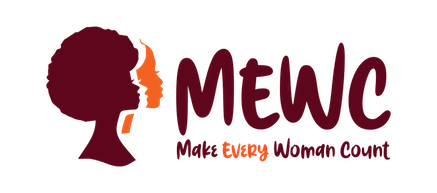South Africa legalised abortion in 1997. Yet so few clinics offer them that women still risk their lives by turning to illegal means.
I have been an abortion provider for as long as I have been a qualified doctor. In the past five years, I have been inundated with emails, social media requests and calls from women from all walks of life desperate for my help.
I will never forget one young woman who came to the public clinic in the West Rand township near Johannesburg, panicking about massive blood loss from her vagina. It was only after some prompting that she and a family member admitted to using abortion pills purchased outside a shopping centre. She bought the pills after being denied an abortion by the local clinic, where health workers told her “We don’t do those things here,” and shamed her for being young and sexually active.
Paramedics were soon on the scene as she needed resuscitation and they transported her to the nearest private hospital. Two hours later, I learned that she had gone to the operating theatre, where she was undergoing a hysterectomy as a result of sepsis and haemorrhage. She was only 17.
This happened in South Africa, a country that liberalised abortion 21 years ago. And it serves as a warning to those rejoicing over the referendum victory in Ireland: after the laws have been passed, the hard work of implementation begins.
The Choice on Termination of Pregnancy Act (Ctop) came into effect in South Africa in February 1997, with hopes it would promote female reproductive autonomy by providing free access to abortion. It has been described by the Guttmacher Instituteas “one of the most liberal abortion laws in the world” and secured all South African women – and minors – the right to decide to have an abortion.
While the Act is celebrated as a historic moment for women, today’s reality could not be more different. There is a lack of access to information on legally recognised sexual and reproductive rights – including how and where to access legal abortion services – and too few authorities help make abortion accessible. The law is necessary, but it is not sufficient to ensure that women have access to abortion – in South Africa and across the rest of the world.
There are several reasons why abortion service provision has essentially ground to a halt despite South Africa’s liberal abortion law.
The formal health system does as little as it can to comply with the law. A recent survey by Bhekisisa, the Mail & Guardian newspaper’s health journalism centre, found that less than 5% of public clinics and hospitals offer the procedure. The National Department of Health’s website fails to list any information on abortion and neither do its four mobile apps.
Instead, women turn to illegal and unsafe means to terminate pregnancies. According to a 2017 study, 32% of South African women do not know abortion is legal. Experts believe that 50% of abortions occur outside designated health facilities. Illegal abortion flyers have become recognisable on many lamp-posts across the country, including at the entrance of the Department of Health. They promise same-day abortions, which can include an indiscriminate concoction of pills and procedures that risk incomplete abortions, sepsis and even death.
There is little political will to uphold the law. Authorities take no preventative measures to control or prosecute street and cyber marketing for illegal abortion services. The minister of health, Aaron Motsoaledi, has been named a champion of the She Decides movement, yet he has led a department that has regressed in the last decade over abortion services. He is unresponsive and inaccessible to women’s movements and shows little stewardship in ensuring the Ctop Act is translated into services.
As a doctor, I have seen what lack of access to abortions means: too many South African women suffer needless complications and preventable deaths. But I cannot get much more specific than that, as the Health Systems Trust said in its 2011 reportthat the government’s abortion statistics are “increasingly unreliable”.
The Department of Health estimated that between 2008 and 2010, 23% of maternal deaths resulting from septic “miscarriages” in public health facilities were the direct result of unsafe abortions. The true number of maternal deaths resulting from abortion complications remains unknown, and is likely to be under-reported.
We cannot ignore the role the US has played in limiting South Africa’s legal milestones. The Mexico City policy, also known as the “global gag rule”, denies foreign organisations receiving US government funds the right to provide information, referrals or services for legal abortions. Trump’s expansion of the rulefurther restricts NGOs to using their own funds to save lives. This will lead to preventable deaths and life-long ill health from complications due to unsafe procedures.
In response to the lack of provision for women wanting a pregnancy terminated in South Africa, Amnesty International and the University of Cape Town made important recommendations for what is required to ensure women can access abortion services as provided for by law, in a safe and timely manner.
It’s been 21 years since abortion was legalised in South Africa, but we have not seen the political will to uphold basic human rights for women. It is possible for people to be aware of their rights, to build an inclusive policy and ensure access to quality services. What will it take for my country to step up?
